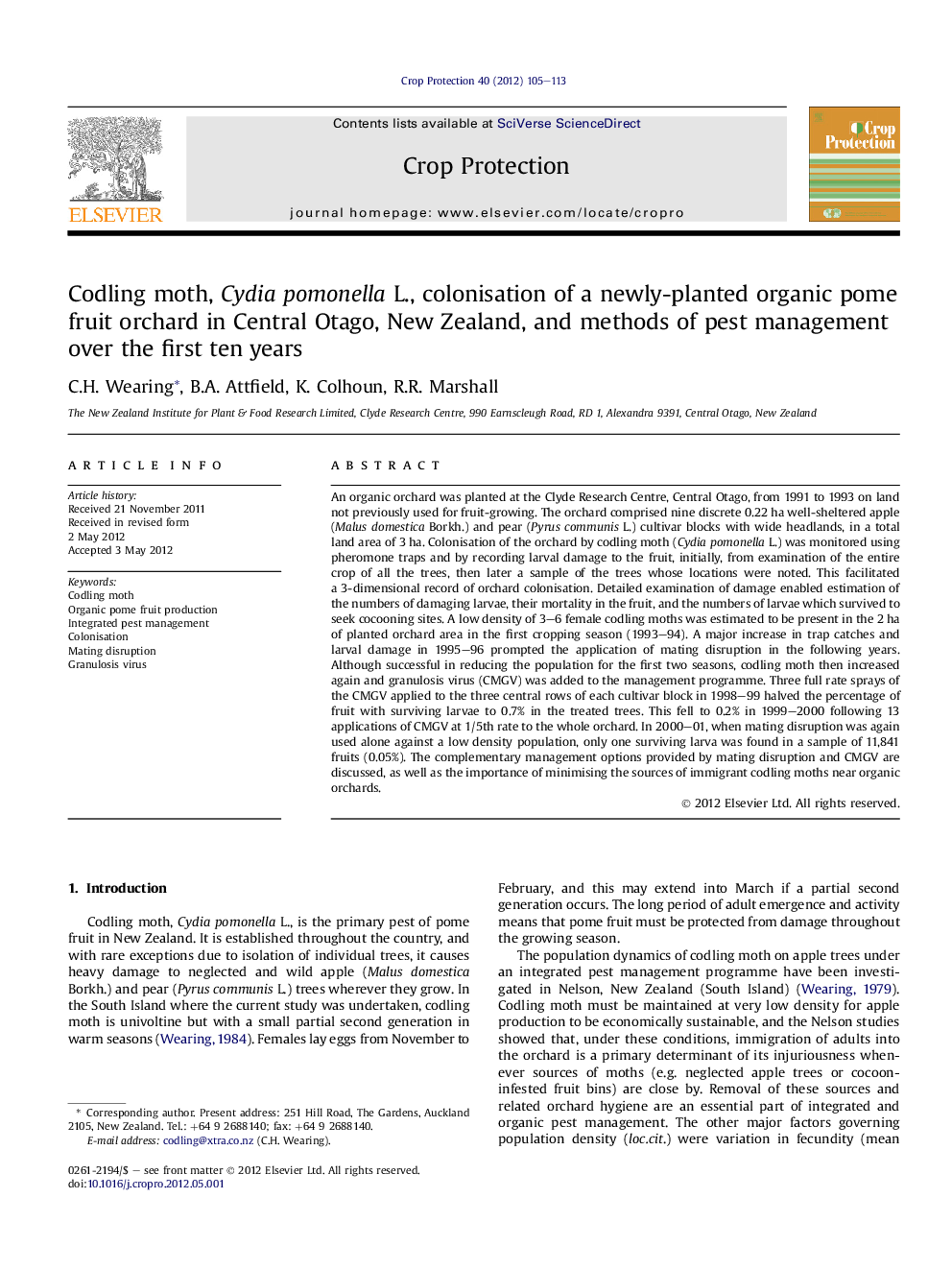| Article ID | Journal | Published Year | Pages | File Type |
|---|---|---|---|---|
| 4506323 | Crop Protection | 2012 | 9 Pages |
An organic orchard was planted at the Clyde Research Centre, Central Otago, from 1991 to 1993 on land not previously used for fruit-growing. The orchard comprised nine discrete 0.22 ha well-sheltered apple (Malus domestica Borkh.) and pear (Pyrus communis L.) cultivar blocks with wide headlands, in a total land area of 3 ha. Colonisation of the orchard by codling moth (Cydia pomonella L.) was monitored using pheromone traps and by recording larval damage to the fruit, initially, from examination of the entire crop of all the trees, then later a sample of the trees whose locations were noted. This facilitated a 3-dimensional record of orchard colonisation. Detailed examination of damage enabled estimation of the numbers of damaging larvae, their mortality in the fruit, and the numbers of larvae which survived to seek cocooning sites. A low density of 3–6 female codling moths was estimated to be present in the 2 ha of planted orchard area in the first cropping season (1993–94). A major increase in trap catches and larval damage in 1995–96 prompted the application of mating disruption in the following years. Although successful in reducing the population for the first two seasons, codling moth then increased again and granulosis virus (CMGV) was added to the management programme. Three full rate sprays of the CMGV applied to the three central rows of each cultivar block in 1998–99 halved the percentage of fruit with surviving larvae to 0.7% in the treated trees. This fell to 0.2% in 1999–2000 following 13 applications of CMGV at 1/5th rate to the whole orchard. In 2000–01, when mating disruption was again used alone against a low density population, only one surviving larva was found in a sample of 11,841 fruits (0.05%). The complementary management options provided by mating disruption and CMGV are discussed, as well as the importance of minimising the sources of immigrant codling moths near organic orchards.
► Immigration of codling moth into organic orchards dominates pest status. ► Mating disruption of codling moth effective against low density population. ► High codling moth mortality from weekly applications of low rate granulosis virus. ► Granulosis virus + mating disruption give powerful management of codling moth. ► Removal of outside sources of adult codling moths vital for organic management.
